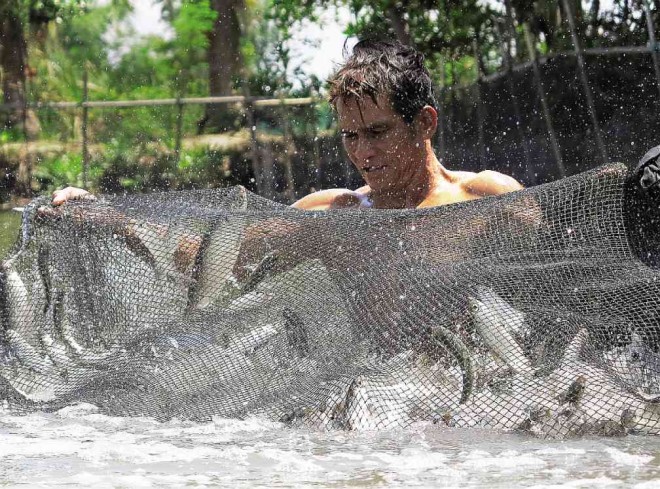Cold spell raises price of ‘bangus’ in Dagupan

AS COLD sets in, producers of milkfish (“bangus”) in Pangasinan province prepare for low harvests, because the cooling temperature reduces spawning. EV ESPIRITU/INQUIRER NORTHERN LUZON
DAGUPAN CITY—With colder days ahead, expect higher prices of bangus (milkfish) grown in ponds and cages in this city in Pangasinan province.
This is because bangus production normally drops during cold months, said Westly Rosario, chief of the National Integrated Fisheries Technology Development Center here.
“With fewer bangus in the market and a higher demand, the price is also higher,” Rosario said.
The bangus grown in this coastal city has been the most sought after variety because of its distinct taste, making it the country’s tastiest and juiciest.
Bangus now sells at P100 to P120 a kilogram, up from P80 to P105 a kilogram last October.
Last year, bangus supply here decreased by about 20 percent due to the cold weather, city agriculturist Emma Molina said.
She said that from an average of 5 metric tons, bangus traded daily at the fish market here had dropped to about 3.8 MT during the cold months in 2014.
Rosario said bangus stopped spawning during the cold months. Those engaged in hatcheries, he said, stopped their operations, resulting in the unavailability of fingerlings to seed the ponds and cages.
“This is one of the problems in aquaculture in tropical countries, like the Philippines, especially now that the temperature is getting colder because of climate change,” Rosario said.
According to the the Philippine Atmospheric, Geophysical and Astronomical Services Administration, the lowest temperature so far this year was 10.4 degrees Celsius, recorded in Baguio City on Saturday. On Sunday, temperature in the summer capital was 11.2 degrees.
Rosario said the average temperature in Pangasinan during the cold months, from December to March, ranged from 23 to 28 degrees Celsius.
A study posted on the Bureau of Agricultural Research website said a temperature of 23 degrees Celsius or lower decreased survival, activity, food intake and growth and development of milkfish fry and juveniles.
“Tropical fish or warm water fish, like bangus, are weak during cold months. So, their feeding behavior, especially, is also affected. They lose their appetite,” Rosario said.
He advised bangus growers to carefully study the reaction of their stocks during feeding to avoid incurring unnecessary expenses.
Instead of feeding them early in the morning, he said, bangus growers should feed them toward noon, when the water becomes warmer.
Rosario said shallow ponds should also be dredged.
“Shallow ponds cool fast, especially at night. But if you make it deeper, the water at the bottom is not that cold, giving the fish an option where to go,” Rosario said.
But he said that despite the drop in bangus production, there was no bangus shortage. Gabriel Cardinoza, Inquirer Northern Luzon